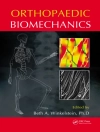This sixth edition is enriched by over 300 figures, 150 tables and a video-companion collecting more than 100 cases also presented in the format of short movies and teaching cartoons. This extensively revised and enlarged edition of this long-seller documents the very significant advances made since the fifth (2009) edition and is entirely written by Eugenio Picano, a pioneer in the field sharing his lifetime experience with the help of an international panel of 50 contributors from 22 countries representing some of the best available knowledge and expertise in their respective field. In a societal and economic climate of increasing pressure for appropriate, justified and optimized imaging, stress echocardiography offers the great advantages of being radiation-free, relatively low cost, and with a staggering versatility: we can get more (information) with less (cost and risk). For a long time, the scope and application of stress echo remained focused on coronary artery disease. In the last ten years, it has exploded in its breadth and variety of applications. From a black-and-white, one-fits-all approach (wall motion by 2D-echo in the patient with known or suspected coronary artery disease) now we have moved on to a omnivorous, next-generation laboratory employing a variety of technologies (from M-Mode to 2D and pulsed, continuous, color and tissue Doppler, to lung ultrasound and real time 3D echo, 2D speckle tracking and myocardial contrast echo) on patients covering the entire spectrum of severity (from elite athletes to patients with end-stage heart failure) and ages (from children with congenital heart disease to the elderly with low-flow, low-gradient aortic stenosis).
Mục lục
1. Stress echocardiography: a historical perspective.- 2. Anatomical and functional targets of stress testing.- 3. Symptoms and signs of myocardial ischemia.- 4. Rational basis of stress echocardiography.- 5. Pathogenetic mechanisms of stress.- 6. Echocardiographic signs of ischemia.- 7. Segmentation of the left ventricle.- 8. Right heart stress echocardiography.- 9. Coronary flow reserve.- 10. Stress echocardiography: instructions for use.- 11. Exercise echocardiography.- 12. Dobutamine stress echocardiography.- 13. Dipyridamole stress echocardiography.- 14. Adenosine and Regadenoson stress echocardiography.- 15. Pacing stress echocardiography.- 16. Ergonovine stress echocardiography.- 17. Hyperventilation, handgrip, cold pressor and squatting stress echocardiography.- 18. Grading of ischemic response.- 19. Diagnostic results and indications.- 20. Myocardial viabili.- 21. Diagnostic flowcharts.- 22. Prognosis.- 23. New technologies.- 24. Contrast stressechocardiography.- 25. Diastolic stress echocardiography.- 26. Endothelial function in the stress echo laboratory.- 27. Special subsets of angiographically defined patients.- 28. Special subsets of electrocardiographically defined patients.- 29. Special subsets of clinically defined patients.- 30. Microvascular disease.- 31. Hypertension.- 32. Diabetes.- 33. Stress echocardiography in dilated cardiomyopathy.- 34. Stress echocardiography in hypertrophic cardiomyopathy.- 35. Stress echocardiography after cardiac transplantation.- 36. Stress Doppler echocardiography in valvular heart disease.- 37. Pediatric Stress echocardiography.- 38. Stress echocardiography and nuclear imaging.- 39. Stress echo vs MSCT.- 40. Stress echo vs cardiac magnetic resonance imaging.- 41. Appropriateness in the cardiac imaging and stress echo laboratory.












